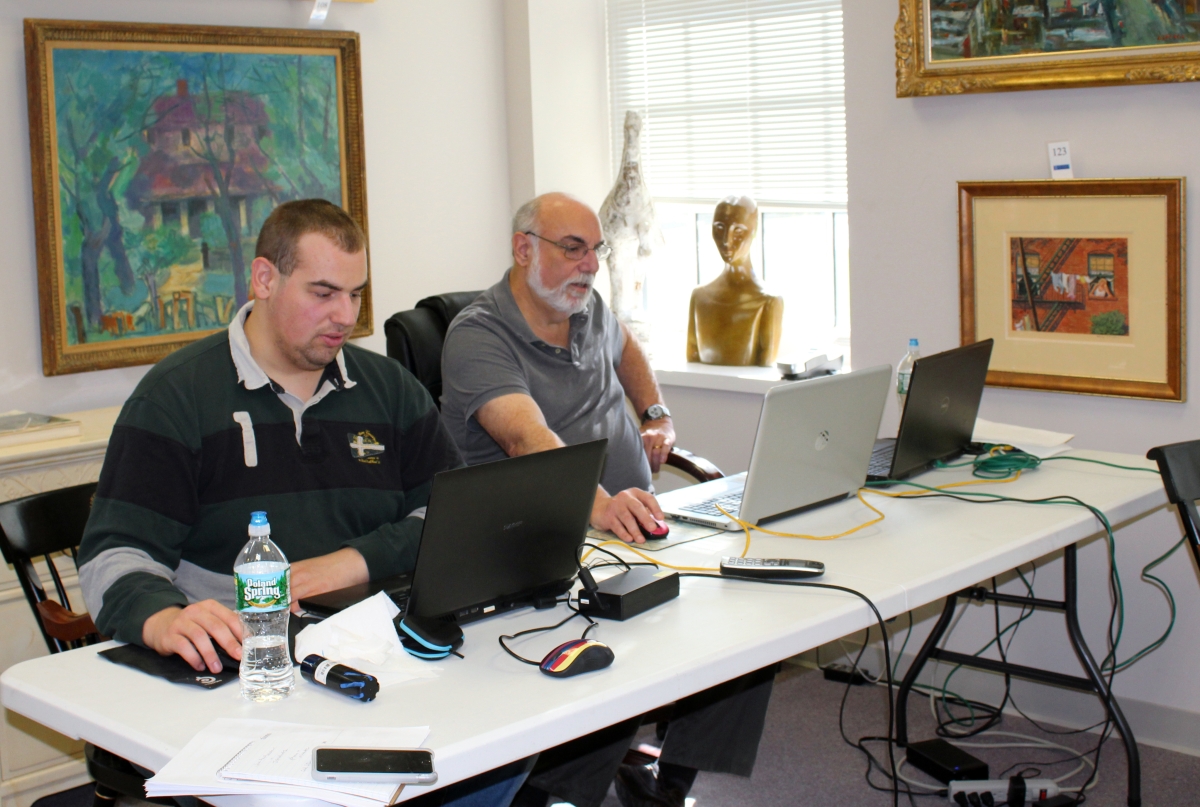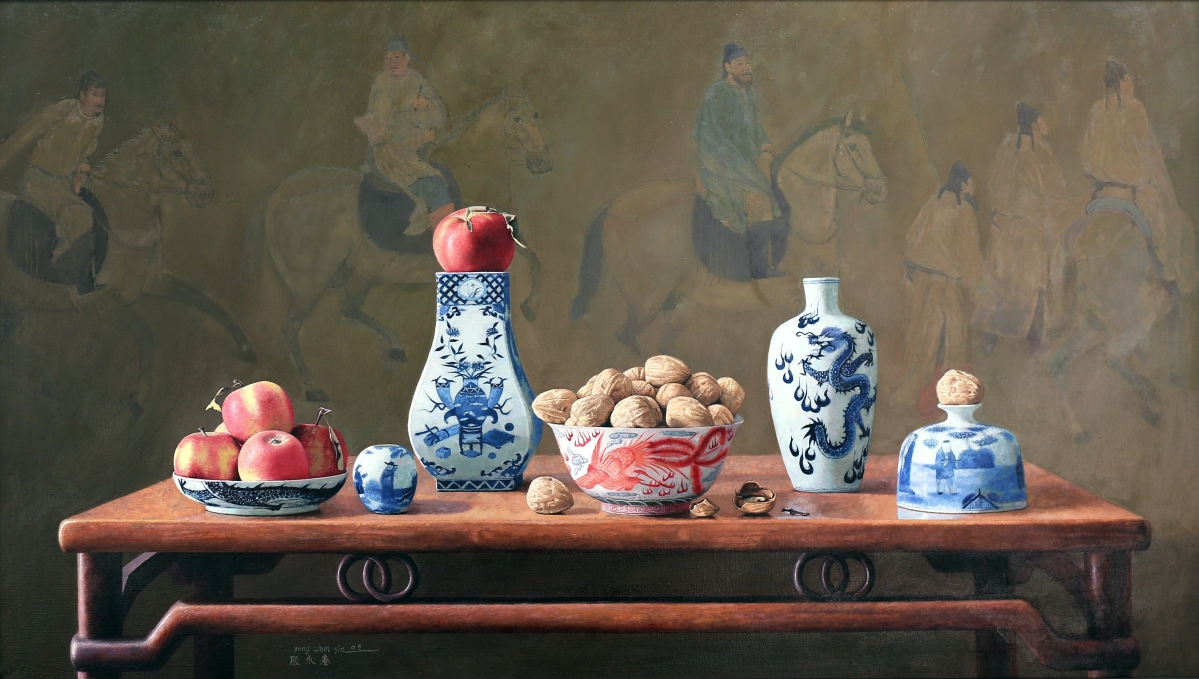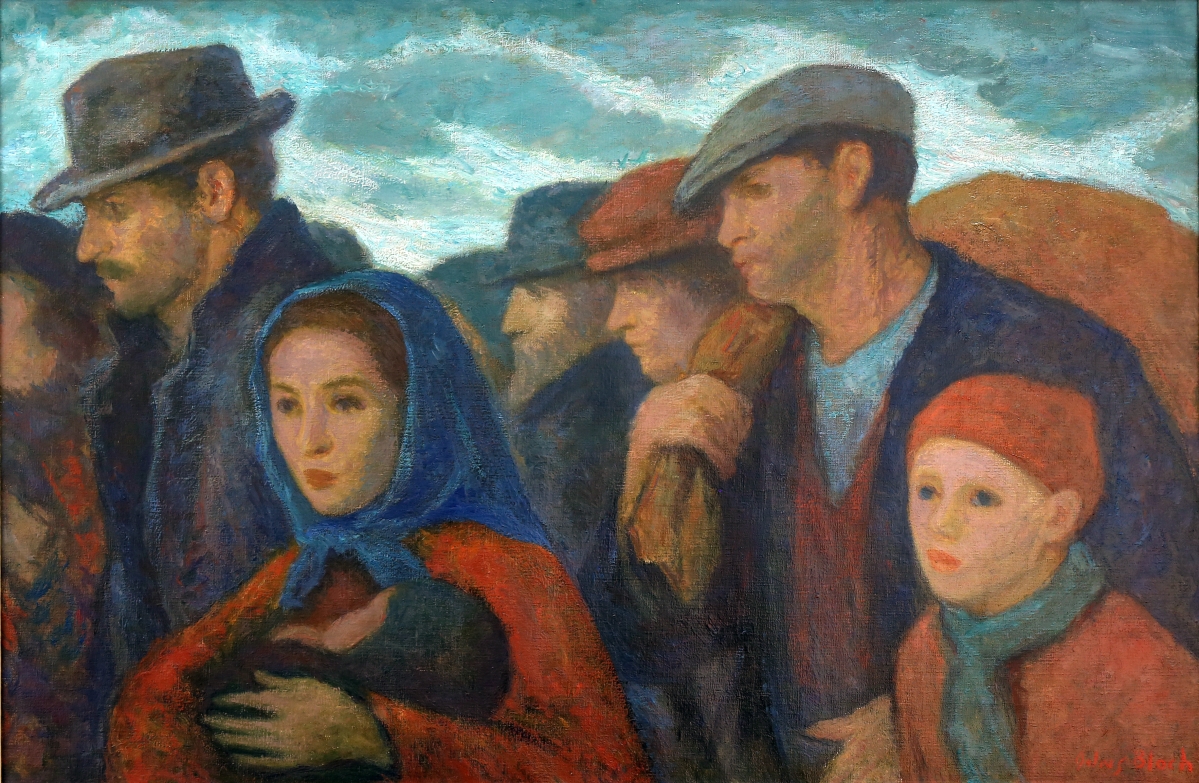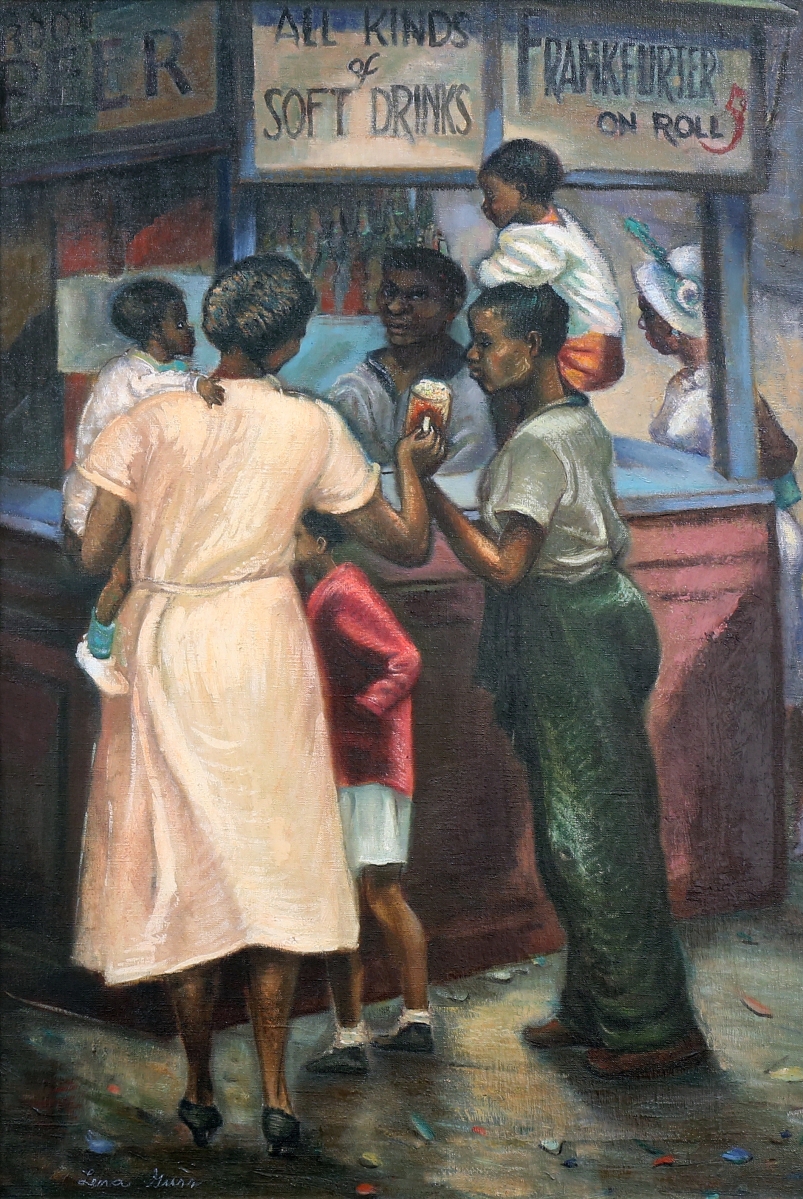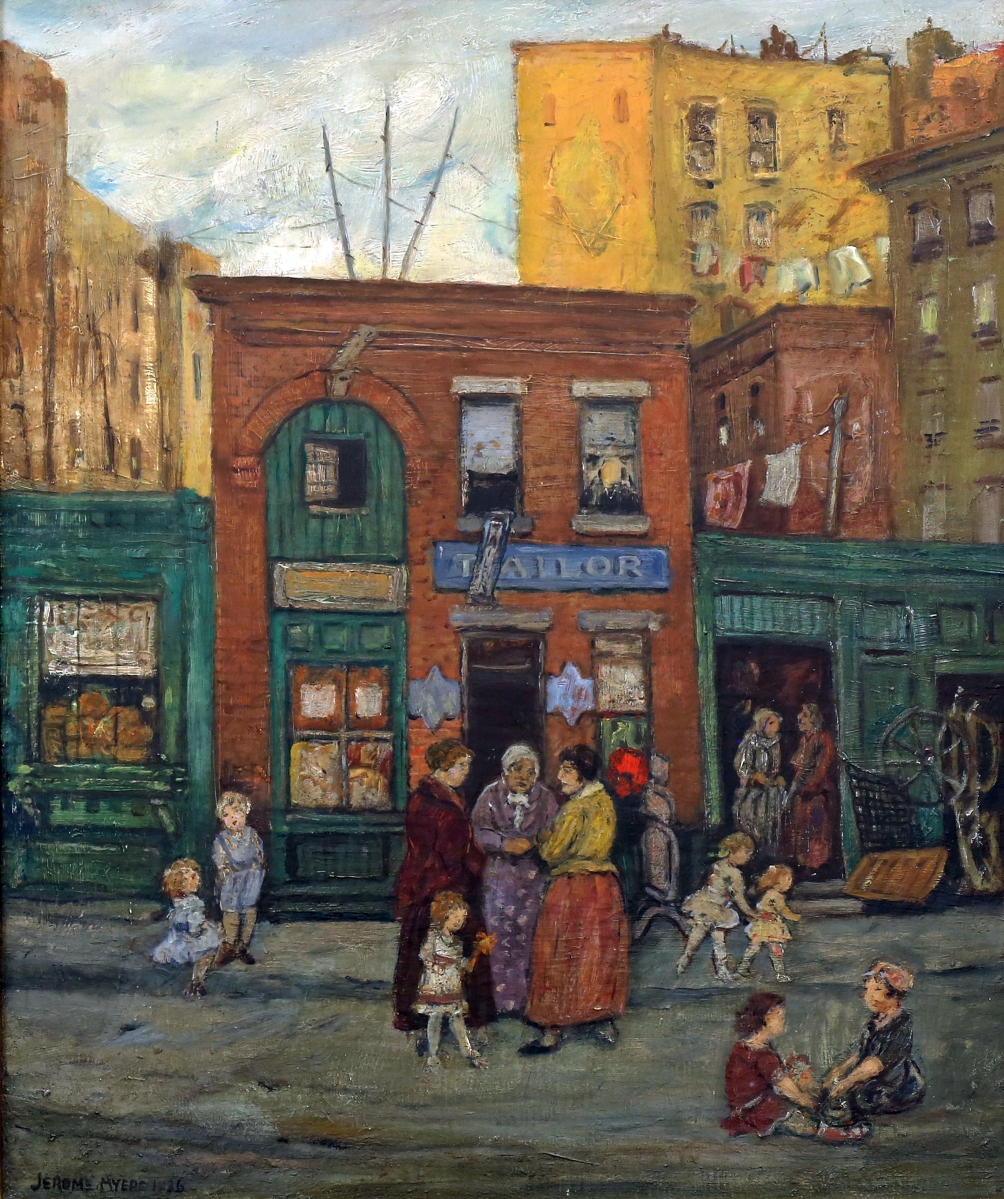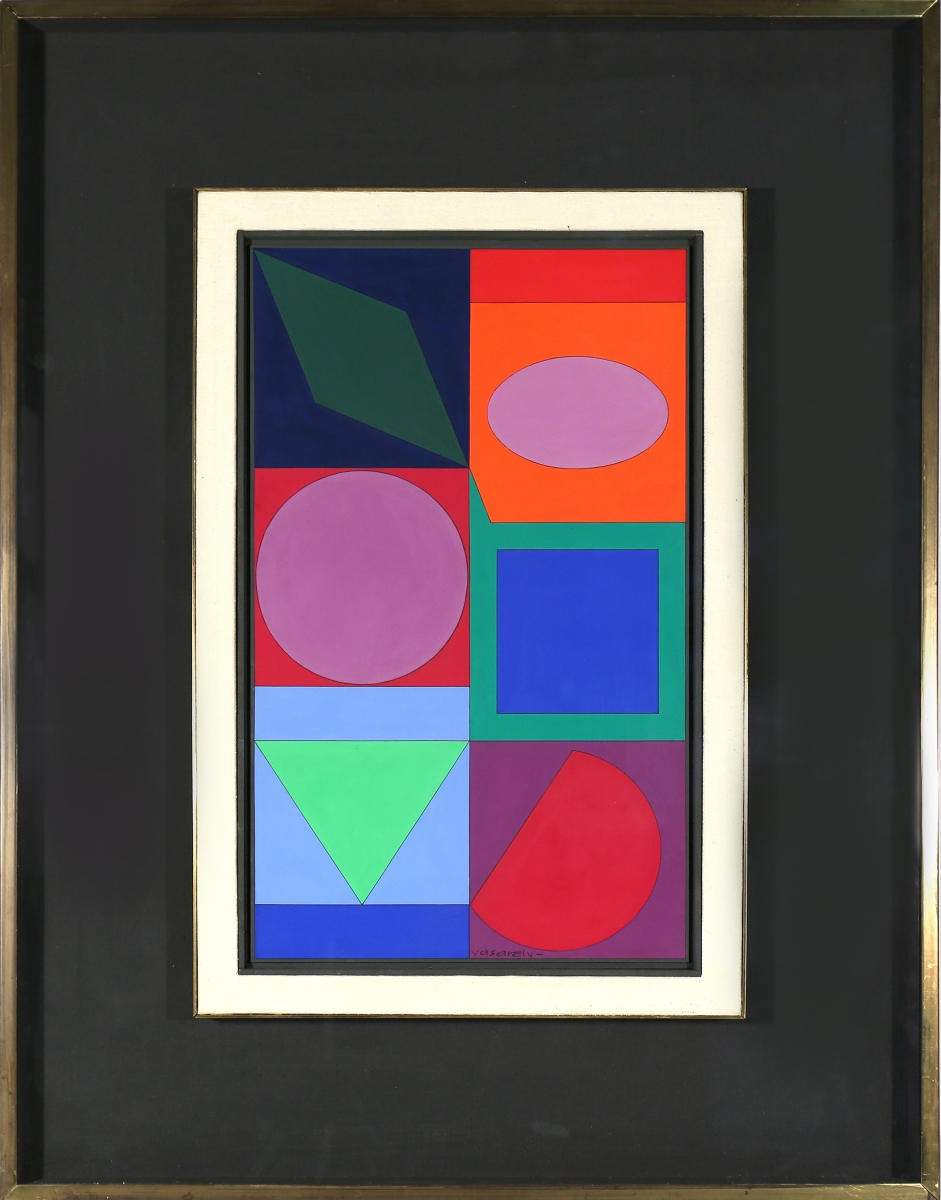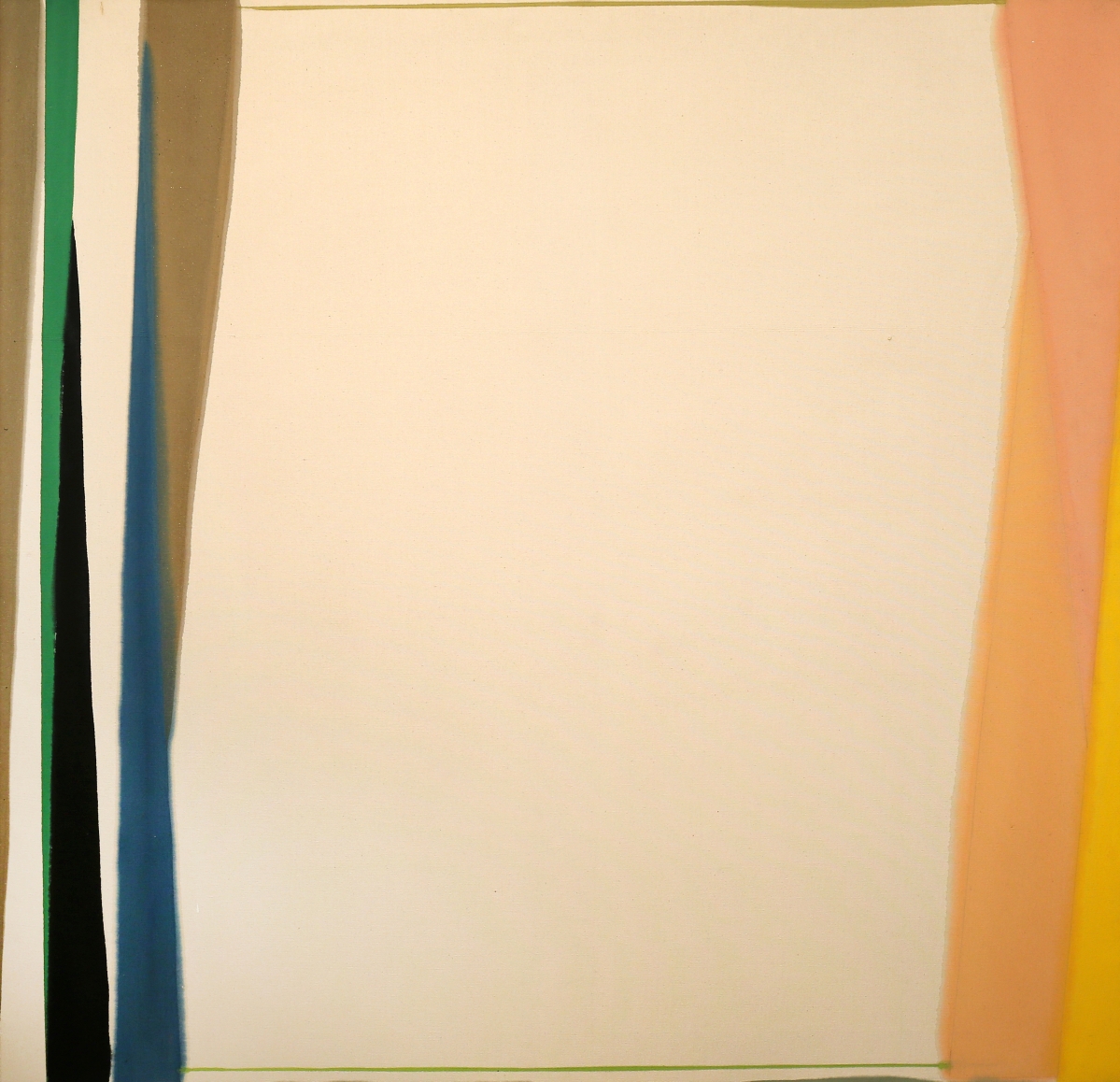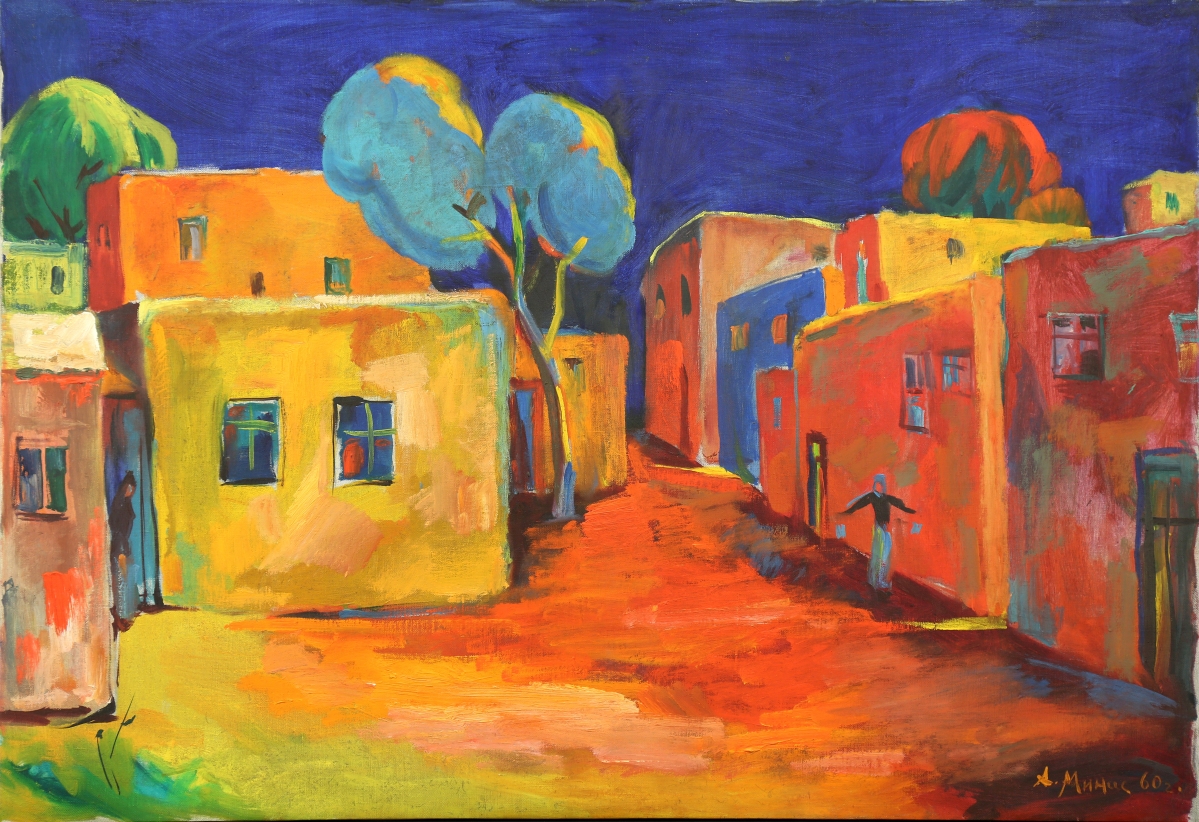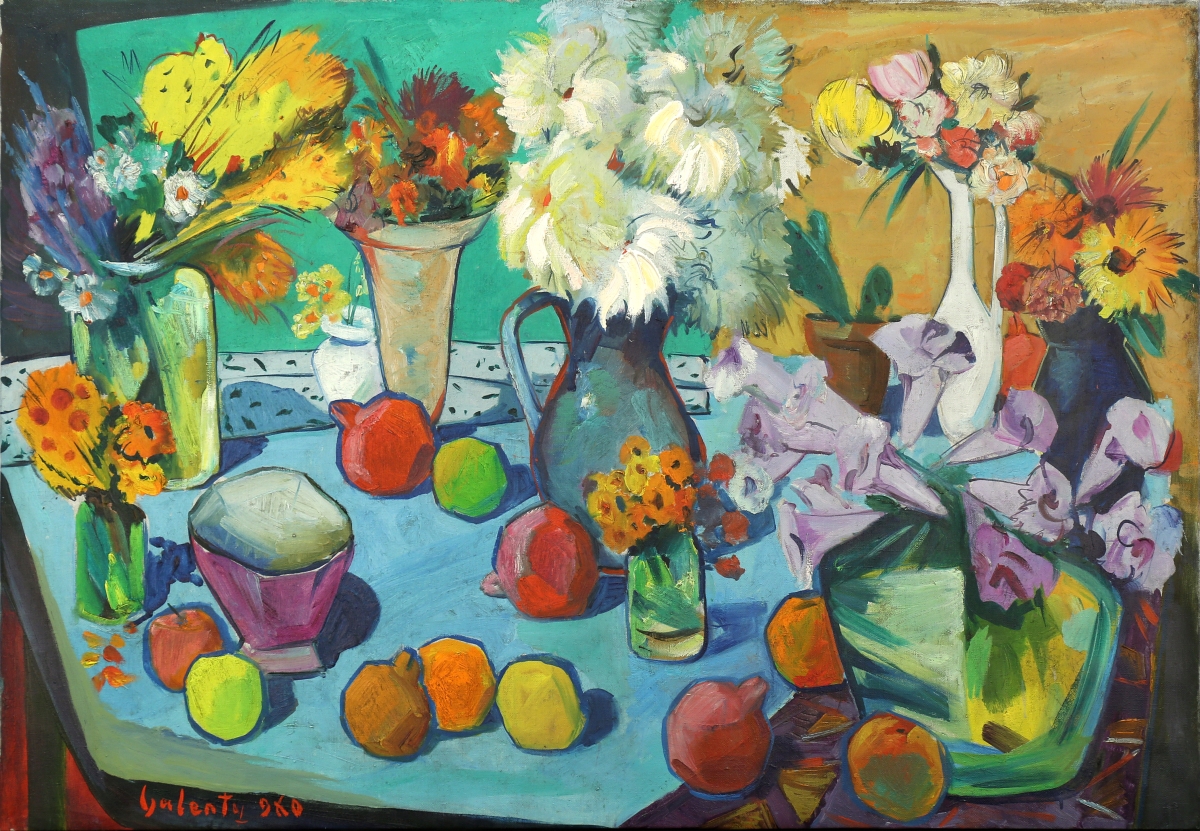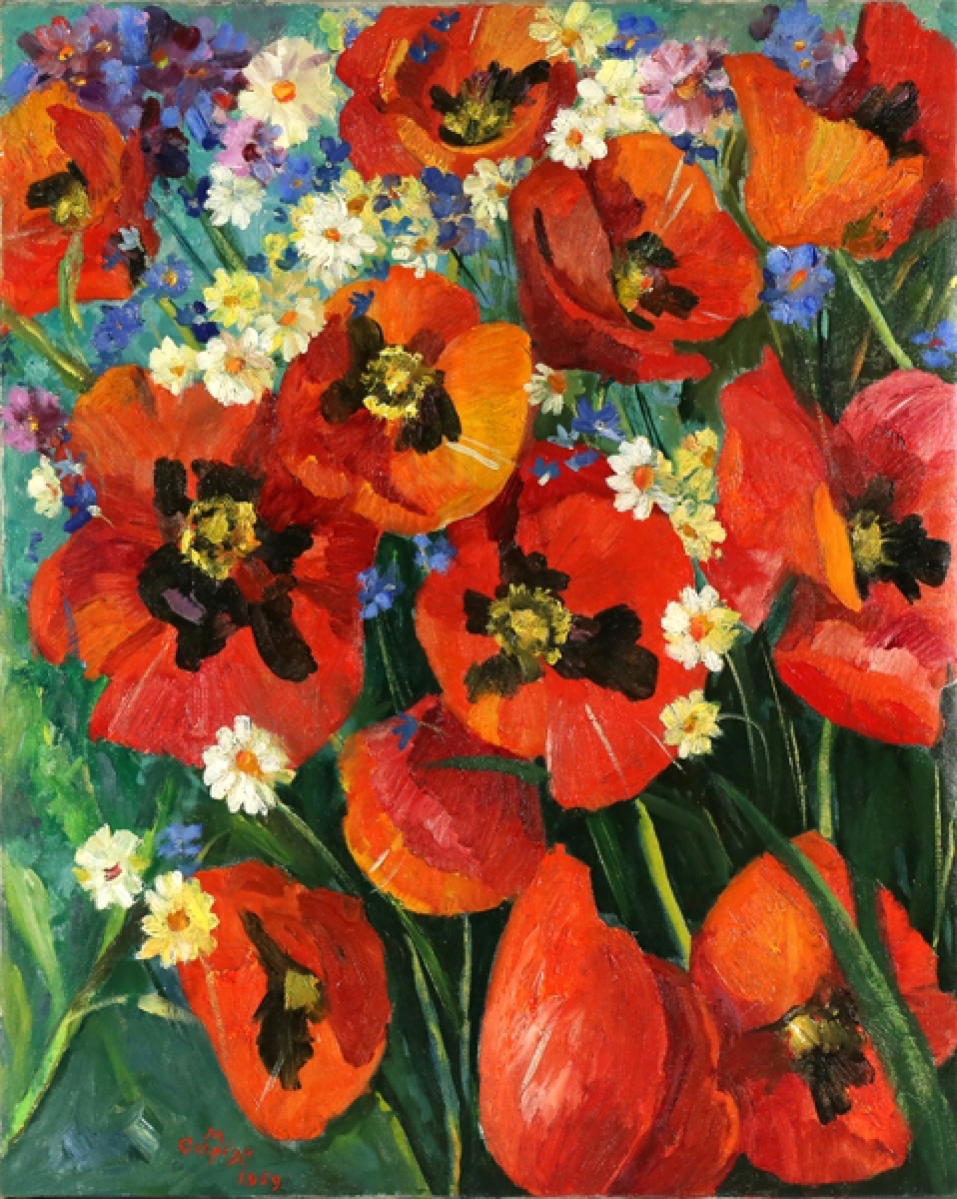
The sale’s top lot, Martiros Seregeevich Sarian’s (Armenian, 1880–1972) “Poppies and Camomiles,” realized $67,375.
Review and Onsite Photos by W.A. Demers, Additional Photos Courtesy Trinity International Fine Art
AVON, CONN. — Trinity International Auctions offered a double treat at its tenth annual fall auction on October 15. Not only did the firm present its staple selection of classic and contemporary fine art from around the world, but a major portion of the auction comprised a collection of Jewish American artists from 1925 to 1950. The Steven Wasser collection was exhibited at the National Museum of American Jewish History in Philadelphia. There are 80 pieces in the collection — approximately 50 were sold in this auction and the rest will be offered in February.
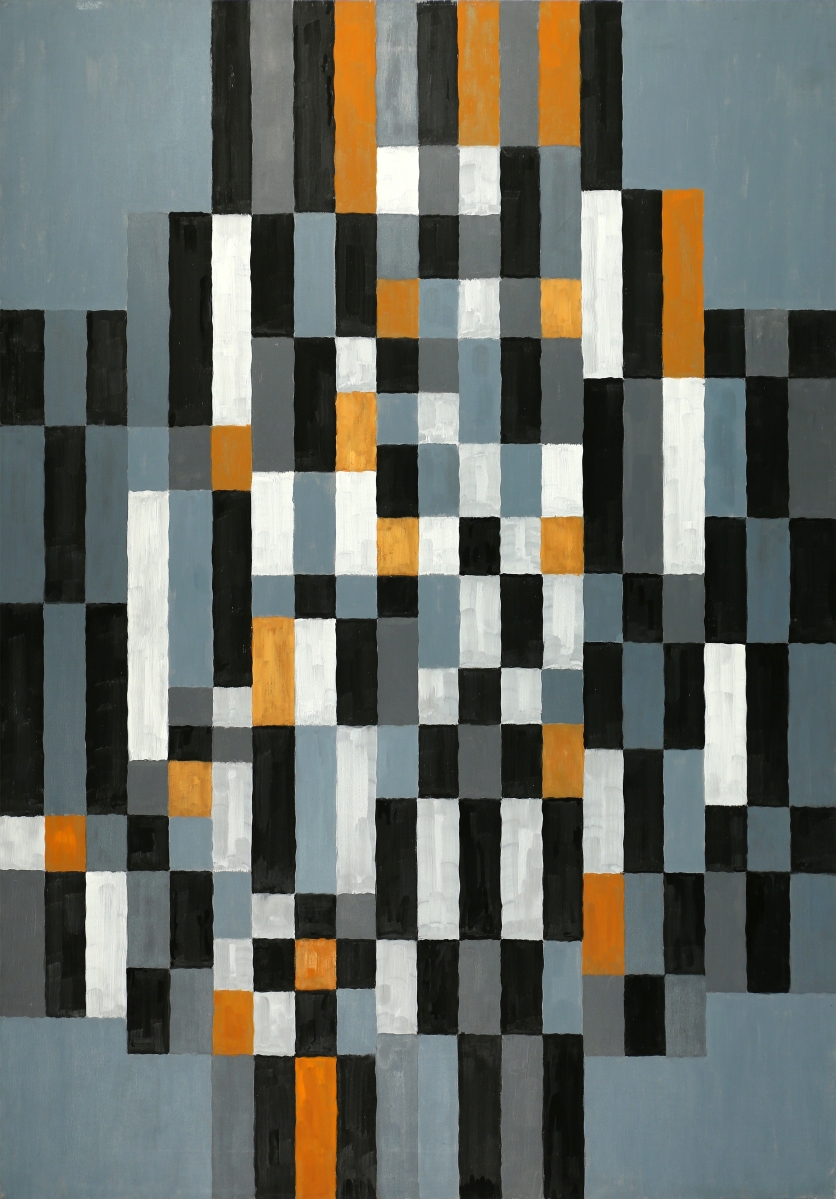
Bringing the highest price among the Fleischmann canvases — $61,250 — was this untitled work from 1963, 59 by 43 inches.
The focus of Wasser’s collection was the experience of being an American as seen through the eyes of the Jewish American artists working in the two and a half decades between the Roaring Twenties and stock market crash to the aftermath of World War II. Mostly immigrants from Eastern Europe or the children of immigrants, many of the artists or their families came to America in the decades around the dawn of the Twentieth Century and settled in the major cities, many in New York City. As many became leaders in the trade union movement, others employed their artistic skills to pursue political agendas. Many Jewish artists believed that painting was one of the best means to express one’s inner thoughts and feelings and should be used as a way to highlight social injustices. Over time, this type of art became known as “Social Realism.”
One of these artists, Jerome Myers (1867–1940) was an American artist and writer associated with the Ashcan School, particularly known for his sympathetic depictions of the urban landscape and its people. His “Shops in Harlem,” 1936, an oil on canvas measuring 24 by 20 inches, was offered in this sale and sold for $10,400.
“The Emigrants” by Julius Bloch (American, 1888–1966) similarly tells the story of Jewish life, but in this case through the features of the people themselves rather than their neighborhoods. Fetching $12,500, “The Emigrants” oil on canvas measured 20 by 30 inches and was signed lower right.
Another highlight from the Wasser collection was a lively scene by Lena Gurr (American, 1897–1992), “Family at the Refreshment Stand,” selling for $3,675.
In addition to the single-owner Jewish American artist collection, the firm conducted a broad-based auction of fresh art.
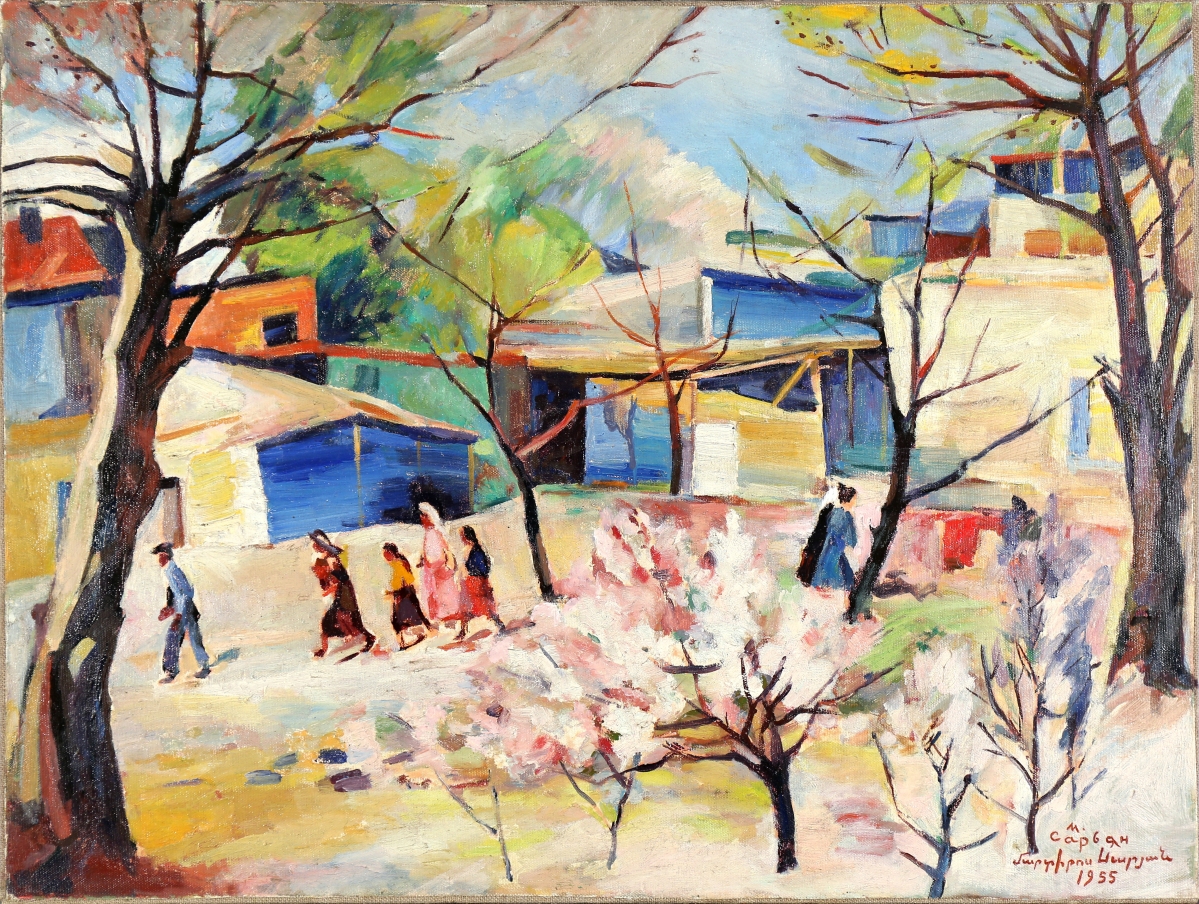
Martiros Seregeevich Sarian (Armenian, 1880–1972) “Spring in Yeravan,” 1955, oil on canvas, 20½ by 29¼ inches, brought $50,200.
Leading the day overall was a work by Martiros Seregeevich Sarian (Armenian, 1880–1972). “Poppies and Camomiles,” an oil on canvas alive with color and verve, realized $67,375. Measuring 30½ by 24½ inches, signed lower left and dated 1959, the work was accompanied by a certificate of authenticity from the Expert Center of Culture Values, Ministry of Culture, Republic of Armenia. Another Sarian work, “Spring in Yeravan,” 1955, oil on canvas, 20½ by 29¼ inches, was bid to $50,200.
It was not the first time Trinity has had success with this artist. In February of this year, Sarian’s vibrant “Still Life with Flowers and Fruits,” 1952, topped that sale as well, going out at $93,100.
The artist, whose surname is also spelled “Saryan,” was a founder of the Armenian national school of painting. A master of the still life genre, he was devoted to the glorification of nature, which both of these works so vividly exemplify.
Other Armenian artists achieved notable results in this sale. Realizing $24,500 was “Sultry Day,” 1960, an oil on canvas measuring 28 by 40 inches by Minas Avetisian (1928–1975), a colorful infusion of sunlight tones and buildings and trees. “Flowers and Fruit on a Blue Table,” 1961, by Harutyun Kalents (1910–1967) was bid to $17,150.

Trinity International Fine Art Auctions principal Stephen Gass with “The Emigrants” by Julius Bloch (1888-1966), part of the collection of Jewish American artists from 1925 to 1950 comprising the Steven Wasser collection, which fetched $12,500.
Another popular name in Trinity’s stable of international artists is that of Adolf Richard Fleischmann (German American, 1892–1968), in auctioneer Andrew Gass’s words, “a contemporary German artist coming into his own.” The abstract artist is known for his late work that evolved into constructivism and a precursor of Op Art. Five back-to-back lots of work by Fleischmann were offered in this sale, with an untitled work from 1963, 59 by 43 inches, bringing the highest price — $61,250, followed by “Composition #202”, 60 by 32 inches, and “Composition #97 in Red and Yellow,” 1957, 29 by 36 inches, at $58,000 and $49,000, respectively. All works were accompanied by certificates of authenticity from a family member of the artist.
Fleischmann is the subject of a retrospective at Daimler Contemporary in Berlin that opened in April and closed November 6, the first Berlin retrospective of his work.
Victor Vasarely (French Hungarian, 1906–1997), widely accepted as a “grandfather” and practitioner of the Op Art movement, was represented by an acrylic on panel, “Marsan-X,” 1964, 15¾ by 9 inches, that came out of a New York collection still bearing its Kiko Galleries and Christie’s labels and finishing at $19,600.
Americans were not left out of the top lineup. A large 54-by-54-inch acrylic on canvas by Larry Zox (1937–2006) took $14,700.
Prices reported include the buyer’s premium. For information, www.tiauctions.com or 860-677-9996.


